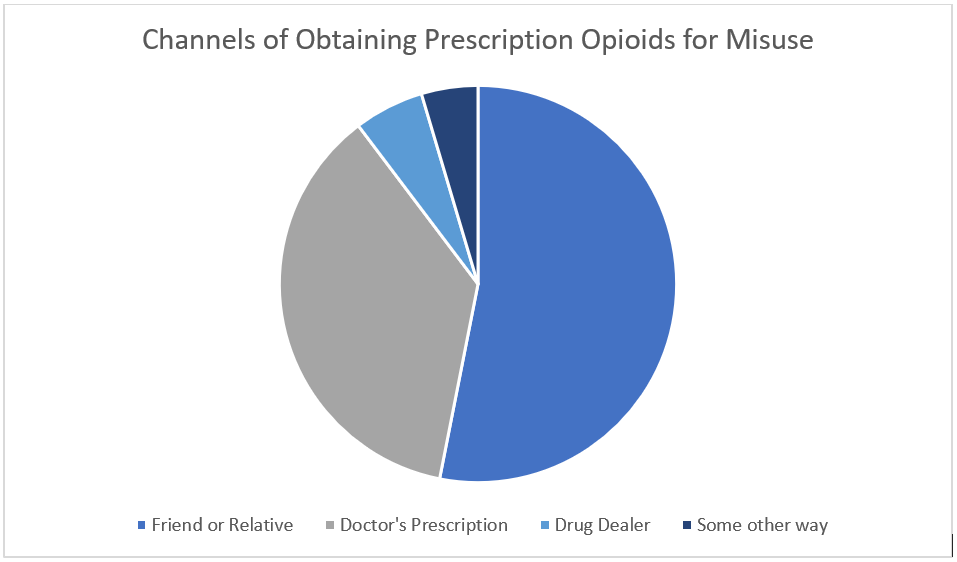 The role of the Internet as a channel to obtain and misuse prescription narcotics is tiny.
The role of the Internet as a channel to obtain and misuse prescription narcotics is tiny.
A report published by the Substance Abuse and Mental Health Services Administration (SAMHSA), a division of the U.S. Centers for Disease Control and Prevention, blamed the Internet for 0.1% (one tenth of 1%) of all narcotic abuse. That data was from 2015. The latest such report, which is called the National Survey on Drug Use and Health has new data from 2017 that doesn’t even have a category for the Internet.
It’s hard to tell if the new number is lower or higher than 0.1%. While 0.1% appears to be statistically insignificant, people have died buying narcotic prescription drugs online and all channels of abuse need to be addressed.
Drug Companies Want to Hide Lower Drug Prices from Americans
On the other hand, drug companies are lobbying Congress to crackdown on Internet companies about opioids, but what they really want is for Americans to stop using the Internet to access lower prescription drug prices from Canada and other countries. In fact, drug giant Eli Lilly wants to censor the Internet by removing Canadian online pharmacies from Google search results in the U.S. Let’s address opioid sales online with a scalpel, not a sledge hammer. More importantly, let’s put resources into treatment and use law enforcement where it’s most needed.
According to the government’s survey, of the 11.1 million people who misused prescription opioids, here’s how they obtained them: 53.1% from a friend or relative; 36.6% from a doctor’s prescription; 5.7% from a drug dealer; and 4.6% some other way.
I don’t know why SAMHSA removed the Internet as a category but believe there are two possible answers:
One, the internet channel was statistically insignificant.
Two, the incredibly small percentage, 0.1%, did not fit the agenda of the pharmaceutical industry to blame the Internet for illegally obtained prescription narcotics.
The data showing that only 0.1% of Americans who abuse opioids get them online doesn’t justify the major crackdown on the Internet desired by the pharmaceutical industry.
Yes, drug companies can lobby Congress and federal agencies to have questions removed and added to research on matters that affect them. The FDA has never reported a person seriously sickened or killed by buying medicine internationally from an online pharmacy that requires a prescription. The safest international online pharmacies don’t sell opioid medicine or any controlled drugs.
What does the category “some other way” account for according to SAMHSA?
“Some other way includes write-in responses not already listed in this table or responses with insufficient information that could allow them to be placed in another category.”
That means they didn’t ask about the Internet, but people may have written it in. I’ll update this post when I find out more about it.
Consumer Advocacy
As drug companies continue to pressure Congress about stopping personal drug importation by censoring the Internet, it’s important for consumer advocates to stay on top of this data. As I wrote last week, if you look closely, the law, ironically, defends personal drug importation – even if it’s technically illegal.
Let’s beat the opioid crisis without stopping people from safe personal drug importation of non-opioid, non-controlled products.
Tagged with: Online Pharmacy, opioids



pharmaceutical companies have turned to botanical drugs for alternative medicines to treat diseases with unmet medical needs. I am studying this topic from a long time. This is really knowledgeable blog and easily understandable. Thanks for sharing this blog post.
Thanks for providing such a piece of knowledgeable information.
I am student of clinical research. I found your article very helpful for my project research. It has cleared my doubts about this topic and I am obliged for this informative post. Keep sharing.